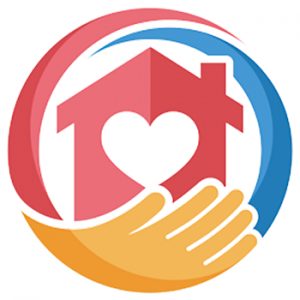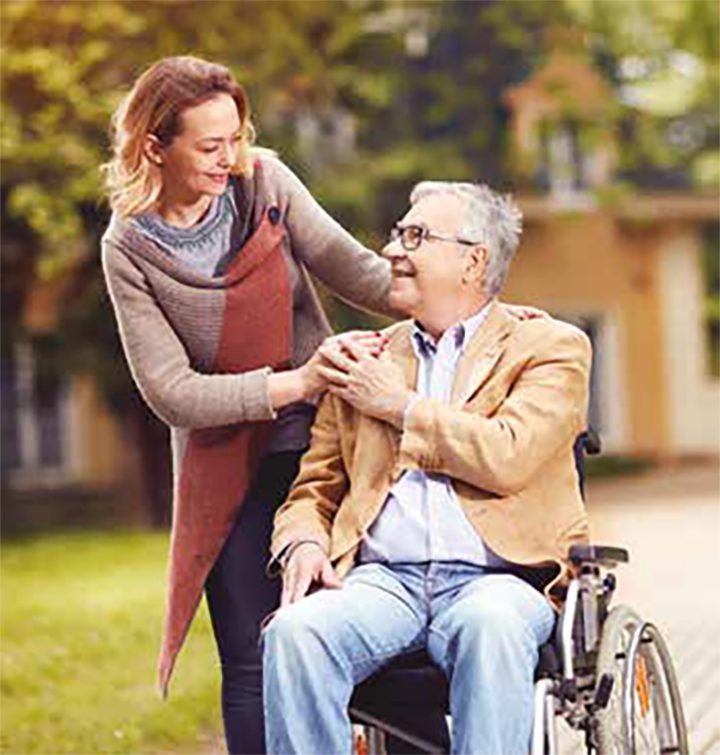As healthcare providers (HCPs), we are aware of the demographic shift and increased longevity that have resulted in a rise of the aging population in the United States and in many other countries around the world.1 These changes have increased the need for “informal” caregivers, usually partners or relatives, to provide assistance to individuals at varying levels of healthcare need. Unpaid caregiving by partners, family members, or even friends remains the main source of long-term care for older persons worldwide.1 This caregiving, usually provided by women, can have an adverse impact on caregivers’ health, quality of life, economic stability, and longevity.2,3
Rising need for caregivers
 Increasing longevity, the aging of the large Baby Boomer generation, and a decline in fertility and subsequent family sizes of younger generations have all contributed to the rising need for informal caregivers amidst a shrinking pool of prospective younger caregivers. The 65-and-older population in the U.S. is projected to nearly double over the next three decades, ballooning from 48 million to 88 million by 2050.1 Declining fertility levels have been one of the main propellers of a demographic shift to an older population; the global fertility rate is near or below the 2.1 replacement level in all world regions except Africa.1 In 2030, the first wave of Baby Boomers will turn 85, an age when people are twice as likely as those even a decade younger to need help getting through the day. However, because of shrinking family sizes over the past few decades, fewer young or even middle-aged adults will be available to care for their older relatives in the years ahead.1
Increasing longevity, the aging of the large Baby Boomer generation, and a decline in fertility and subsequent family sizes of younger generations have all contributed to the rising need for informal caregivers amidst a shrinking pool of prospective younger caregivers. The 65-and-older population in the U.S. is projected to nearly double over the next three decades, ballooning from 48 million to 88 million by 2050.1 Declining fertility levels have been one of the main propellers of a demographic shift to an older population; the global fertility rate is near or below the 2.1 replacement level in all world regions except Africa.1 In 2030, the first wave of Baby Boomers will turn 85, an age when people are twice as likely as those even a decade younger to need help getting through the day. However, because of shrinking family sizes over the past few decades, fewer young or even middle-aged adults will be available to care for their older relatives in the years ahead.1
Caregiver role as a policy concern
The caregiver role has become a significant public policy issue that affects healthcare costs, personal losses of wages and benefits, and stability of the workforce. Of note:
- Women provide the majority of informal care to spouses, parents, parents-in-law, friends, and neighbors, and they play many roles while caregiving: hands-on care provider, care manager, friend, companion, surrogate decision-maker, and advocate.4
- Sixty-five percent of care recipients are female, with an average age of 69.4 years.4
- The typical caregiver is a woman who works outside the home and provides 20 hours per week of unpaid care to her mother.2
- Although men do provide assistance in this regard, female caregivers may spend as much as 50% more time than their male counterparts do in providing care.5
- Nearly 60% of today’s family members perform tasks that were previously handled by nurses, including giving injections, providing wound care, and operating special medical equipment. These individuals spend an average of $7,000 a year of their own money.2
- Family caregivers aged 50+ years who leave the workforce to care for a parent lose, on average, nearly $304,000 in wages and benefits over their lifetime. For women, this amount—$324,044—is even higher.2
- Family caregivers have been described as America’s other Social Security. The nation’s healthcare system would go broke if it had to pay for their work, valued at $470 billion a year in free care.2
- Workers with eldercare responsibilities comprise all racial and ethnic groups, including African Americans (21%), Hispanics (20%), whites (17%), and Asians (14%).2
- Compared with other demographic groups, low-income workers, minorities, and women are more likely to reduce their work hours or leave the workforce because of their caregiving role.2
Impact on women’s health
Female caregivers are more likely than male caregivers to report poor health, especially when they perceive their roles as difficult or life changing.6Female caregivers are less likely than male caregivers to see HCPs for their own preventive healthcare needs. According to the U.S. Department of Health and Human Services, female caregivers are at increased risk for7:
- depression and anxiety;
- a weak immune system;
- obesity;
- chronic disease;
- problems with short-term memory or paying attention;
and
- heart disease.
NPWH is providing leadership by participating in two coalitions in Washington, DC, that aim to increase awareness of the impact of the female caregiver role: the Coalition for Women’s Health Equity8 and Healthy at Any Age: Women’s Health over 50.
Coalition for Women’s Health Equity
As a key member of this coalition, which comprises about 20 organizations, NPWH participated on the steering committee for its 2nd Annual Women’s Health Empowerment Summit. On May 16, 2018, more than 300 women from across the country met in Washington, DC, to highlight actionable steps to address inequities that endanger women’s health and safety. The summit featured National Women’s Law Center President & CEO Fatima Goss Graves, whose organization administers the TIME’S UP Legal Defense Fund, and Rep. Raul Ruiz, MD (CA-36). Samantha Abrams, Executive Director of the March on Washington Film Festival, served as summit emcee. In addition to lead sponsor Hadassah, the Women’s Zionist Organization of America, Inc., the American Heart Association and Women Against Alzheimer’s were key in focusing attention on policy briefings, scientific advances, financial implications of disease, and the direct impact of policy and advocacy work.
 As a participating organization on the steering committee for the summit, NPWH helped organize a speaker panel, Caregiving Across the Lifespan: the Disparate Impact of Caregiving on Women and Opportunities for Change. Panel members discussed the burden and opportunities presented by caregiving and legislation that would require the government to develop strategies to recognize and support family caregivers. As a panel member representing NPWH, I was honored to speak as both a women’s health nurse practitioner who provides healthcare to many informal caregivers and a daughter of two 96-year-old parents living in partially assisted care. As an NPWH member, I was able to speak directly to the impact on the female caregiver, the invisibility of the issue, and the gap in our healthcare system to recognize and assess the caregiver status of patients, as well as the impact that being a caregiver has on women’s health. The importance of advocating for our patients who are caregivers to practice self-care and disease prevention was stressed. All women who serve as caregivers were encouraged to describe their caregiver roles to their HCPs at health visits.
As a participating organization on the steering committee for the summit, NPWH helped organize a speaker panel, Caregiving Across the Lifespan: the Disparate Impact of Caregiving on Women and Opportunities for Change. Panel members discussed the burden and opportunities presented by caregiving and legislation that would require the government to develop strategies to recognize and support family caregivers. As a panel member representing NPWH, I was honored to speak as both a women’s health nurse practitioner who provides healthcare to many informal caregivers and a daughter of two 96-year-old parents living in partially assisted care. As an NPWH member, I was able to speak directly to the impact on the female caregiver, the invisibility of the issue, and the gap in our healthcare system to recognize and assess the caregiver status of patients, as well as the impact that being a caregiver has on women’s health. The importance of advocating for our patients who are caregivers to practice self-care and disease prevention was stressed. All women who serve as caregivers were encouraged to describe their caregiver roles to their HCPs at health visits.
This event was streamed live on Facebook and generated a lot of Twitter activity among the organizations (#HealthEquity4Her and #NWHW). More information about the other speakers and the summit itself is available here.
Healthy at Any Age: Women’s Health over 50 Coalition
Gay Johnson, CEO of NPWH, described the second Healthy at Any Age summit in her message in the June 2018 issue of Women’s Healthcare. The Healthy at Any Age: Women’s Health over 50 Coalition takes a broad view of women’s health issues as they age, and is launching the National Older Women’s Health Agenda. This agenda includes health issues related to women as caregivers and the adverse impact of caregivers’ long-term neglect of their own health.9 Caregiver-related topics of pay, respite care, mental and physical health, and medication management are considered opportunities for improving healthcare for older women. NPWH will lead the coalition’s communications and meetings and will recruit select public, private, and nonprofit organizations to join the founders. The ongoing journey of the coalition is to unite diverse sectors, share resources, and create strategies that advance the health and well-being of older U.S. women for decades to come.
Taking steps from policy to action
Healthcare providers are encouraged to bring the caregiver role into the health assessment visit with a few simple steps:
1) Ask questions. Listen to their stories.
- During health exams, ask women about their caregiver role and its effects on their physical and mental health.
- Be aware of the known increased health risks for caregivers.
- Inquire about the number of hours per week that they spend in caregiving.
- Assess their stress level and quality of life.
- Assess their support system.
- Be aware that caregiving does not necessarily exert an adverse impact on every caregiver’s life.
2) Promote and support caregivers’ self-care.
- Teach self-care practices and the signs of caregiver burnout.
- Encourage maintaining regular healthcare visits and preventive screenings.
- Utilize patient education tools and community resources:
- Family Caregiver Alliance
- Office on Women’s Health. Caregiver Stress fact sheet
- American Heart Association. Caregivers: Be Realistic, Think Positive
3) Increase your knowledge of health policy and the role of caregivers.
- Become familiar with the Concentrating on High-Value Alzheimer’s Needs to Get to an End (CHANGE) Act of 2018, which, if passed, would address the care needs of patients and their caretakers, including creating a coverage and payment model that offers family caregivers evidence-based training and certification specific to dementia care.
- Learn about the newly enacted Recognize, Assist, Include, Support and Engage (RAISE) Family Caregivers Act, which provides a framework for public and private sector stakeholders to develop and execute a national caregiving strategic action plan.
- As family caregiver advocates for 40 years, the Family Caregiver Alliance recognizes passage of the federal RAISE Family Caregivers Act as critical to the creation of a strategy to acknowledge and aid unpaid family caregivers on a national level.
- The RAISE Act is an important step toward more fully recognizing the impending crisis in caregiving as the aging population continues to grow. As improved guidelines and policies develop from the legislation, funding will be required to relieve the 2015 AARP estimate of $470 billion in unpaid care and the 2016 AARP estimate of $7,000 in out-of-pocket expenses provided annually by family caregivers.
- Understand that better federal coordination across agencies and initiatives can further the recognition and support of unpaid family caregivers and has the possibility of large-scale change in payment and service delivery systems
Conclusion
Research and public discourse on the caregiver role and its specific impact on women must remain a focus of national and local community attention. Women’s healthcare providers can increase the visibility of the issue through comprehensive assessment in health exams, promotion of education, and provision of support resources for their caregiving patients, as well as increase public policy awareness and action.
Diana M. Drake is Clinical Associate Professor and Specialty Coordinator of the DNP WHNP Program at the University of Minnesota School of Nursing and Program Director for Integrative Women’s Health at the Women’s Health Specialists Clinic, both in Minneapolis. She is Chair of the NPWH Policy Committee and Chair Elect of the NPWH Board of Directors.
References
- United States Census Bureau. U.S. Population Aging Slower than Other Countries, Census Bureau Reports. March 28, 2016.
- AARP Public Policy Institute. Understanding the Impact of Family Caregiving on Work.October 2012.
- Roth DL Fredman L, Haley WE. Informal caregiving and its impact on health: a reappraisal from population-based studies. Gerontologist. 2015;55(2):309-319.
- Family Caregiver Alliance. Caregiver Statistics: Demographics. 2016.
- Family Caregiver Alliance. Online Resources for More Information.
- American Heart Association/American Stroke Association.
- U.S. Department of Health and Human Services. Office on Women’s Health
- Coalition for Women’s Health Equity website.
- American Heart Association. Caregivers: Be Realistic, Think Positive. Last reviewed June 2017.
f”]

